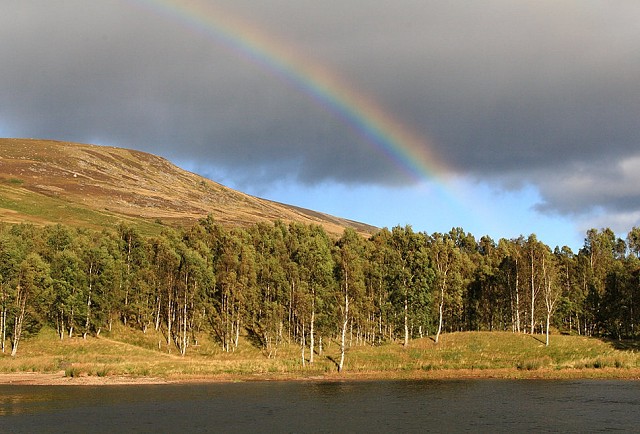
New tree-planting methods that do away with those nasty deer fences are being tested at two nature reserves run by Scottish Natural Heritage (SNH). If the trial proves successful then perhaps one day fence-free woodland walking will become the norm in the Scottish hills.
In areas with deer it is normal for trees to be planted within a barrier of high fencing to protect rarer native saplings, but this traditional technique has a number of obvious drawbacks: It's expensive and unsightly, and creates a barrier to biodiversity; and it can be more than a little inconvenient for walkers too. Have you ever tried climbing a 2-metre deer fence?
Now under new trials at Creag Meagaidh and Beinn Eighe National Nature Reserves, trees which normally struggle to gain a fooothold due to deer grazing will be planted without fences.
The methods being tested at the two reserves are:
• Planting tall saplings on steep slopes, or inaccessible areas in which the leading shoot is out of reach of deer (sabre planting);
• Hiding rarer species in the landscape, making them less visible and accessible to deer;
• Covering the leading shoot with ‘budcaps’ – used in Germany and the USA;
• Using what SNH call 'harmless chemical repellents' to make the tree unpalatable.
Chris Donald, SNH’s South Highland operations manager, said:
'Heavy grazing by deer causes stunted trees which fail to grow above surrounding vegetation. If we can find techniques for establishing these species without costly and unsightly fences, it will help woodland managers create greater diversity.'
'We are committed to trialling these techniques to see if they can be used on a wider scale – especially where deer densities are low and surrounding habitats are in good condition. National Nature Reserves are ideal locations to undertake this kind of novel management.'
'"Natural protection" uses thickets of other species – such as birch, whins or bracken – less attractive to deer and hides rarer species to let them flourish. I have seen this recently in the New Forest National Park where well developed birch and gorse thickets harboured aspen despite high numbers of deer and forest ponies.'









Comments